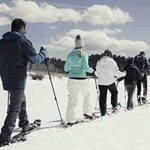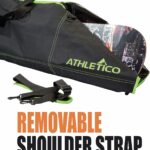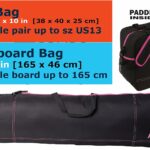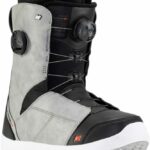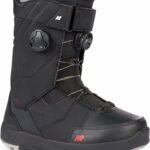Embarking on the quest of finding the perfect snowboard can often feel like navigating a maze of terminology, measurements, and technical specifications. “What Size Snowboard Should I Get?” tackles this problem head-on, providing easy-to-follow guidelines and handy tips to help you choose a board that’s tailored to your pressure points. The aim is to visually simplify the process, taking into consideration your weight, height, riding style, and even boot size, so that you can carve, float, and race with confidence, knowing you’ve made the right choice. It’s like having a snowboarding specialist at your disposal, minus the hassle. Why settle for less when you can ride like a pro? Buckle up, for a rewarding ride is ahead.
Understanding Snowboard Sizes
As an exciting and adrenaline-pumping sport, snowboarding gives you the chance to showcase your dexterity and love for adventure. However, for ensuring a perfect and smooth ride, it is essential to understand the significance of the right snowboard size.
Significance of Proper Snowboard Size
Having a snowboard of adequate size is important to feel comfortable and well balanced while you slide down the hill. With a proper size, not only will you be able to steer and manipulate your board better, but you can also prevent potentially dangerous situations.
Overview of Snowboard Size Variations
Snowboard sizes can vary greatly depending on a number of factors, including the rider’s weight, height, skill level, riding style, and even gender. The sizes are usually measured in centimeters and can range from as small as 100 cm to as large as 165 cm or more.
Importance of Rider’s Weight
In determining the perfect snowboard for you, your weight plays one of the most pivotal roles.
Impact of Weight on Snowboard Performance
A snowboard bends and flexes when you ride. If you’re heavier, your board will flex more and if you’re lighter it will flex less. Finding the right balance here is key to get the most out of your ride, as too much or too little flex can impact your control and performance.
How to Match Snowboard Size with Rider’s Weight
Every snowboard comes with a specific weight range mentioned by the manufacturer to help you find the right fit. If you weigh more, you should opt for a longer board and conversely, go for a smaller one if you weigh less.
Considering Rider’s Height
Interestingly, a rider’s height might not be as crucial as weight, but still needs to be taken into account.
Role of Rider’s Height in Snowboarding
Your height mainly helps determine the length of the board you can comfortably control. A board that is too short or too tall compared to your height can be difficult to manoeuvre.
Size Suggestions Based on Height
As a general rule, if you place the board on its tail, the nose of the board should reach somewhere between your nose and chin. However, this is just a starting point and you should always also take other factors like weight and skill level into consideration.
Impact of Skill Level
Where you stand on the spectrum of snowboarding skill level also affects your board selection.
How Skill Level Affects Snowboard Size Preference
As you gain more experience in snowboarding, you may find a smaller board easier to handle, while beginners might prefer a larger board for better stability.
Recommended Sizes for Beginners to Experienced Riders
Beginners are typically recommended to start with a longer board for the extra stability and control. Intermediate riders might go for a size punchy enough to experiment with. Experienced riders often go for shorter boards as they are easier to manoeuvre and perform tricks with.
Riding Style Influences
Your preferred style of snowboarding also has a significant influence on the size of the board you should select.
Impact of Riding Style on Snowboard Size
Some riding styles, like freestyling, call for a smaller, more manageable board for aerial tricks. At the same time, styles like freeriding demand larger boards for stability while descending steep terrain.
Specific Sizes for Various Riding Styles
Freestyle riders usually prefer shorter, wider and more flexible boards while freeriders and powder hounds might choose longer, narrower and more rigid snowboards. All-mountain riders often find an intermediate size to offer all-around performance.
Gender Specific Snowboards
Gender-specific snowboards have certain size considerations.
Differences between Men’s and Women’s Snowboards
Men’s snowboards are generally a bit wider, stiffer, and longer than women’s. This is down to the difference in average body types between the genders.
Size Considerations for Both Genders
When picking a board, women might want to opt for a slightly shorter and narrower model. Men on the other hand might find the wider and longer boards more comfortable and fitting.
Choosing Kids’ Snowboard Sizes
Understanding the appropriate snowboard sizes for kids is essential for their safety and learning progress.
Unique Considerations for Kids’ Snowboards
Kids’ snowboards differ primarily in terms of weight specifications, flexibility, and length. The weight of a child is more crucial than their height when selecting a snowboard.
Tips for Selecting the Right Size for Children
A board that stands up to somewhere between a child’s chest and chin when upright is generally a good starting point. But again, also consider the child’s weight and skill level.
Importance of Snowboard Width
Width is another factor to think about when selecting your snowboard.
Effect of Snowboard Width on Riding
A snowboard that is too narrow for your feet may cause your toes and heels to overhang which can lead to uncomfortable and uncontrollable rides. On the other hand, one that is too wide may lead to slow edge to edge transitions.
Guide to Selecting Snowboard Width
Your snowboard’s width should correspond to your shoe size. It should be wide enough so your feet just slightly overhang the edges, but not so much that they hit the snow when the board is on edge.
Tips to Select a ‘Freestyle’ or ‘Freeride’ Board
Whether you’re oriented towards freestyle or freeriding will also influence your board size selection.
Differences Between ‘Freestyle’ and ‘Freeride’ Boards
Freestyle boards are known to be shorter, lighter, and flexible, appropriate for tricks and jumps in parks or halfpipes. Freeride boards, on the other hand, are longer and stiffer, and are designed for off-piste and backcountry riders who love steep terrains and deep snow.
Size Selection Tips for Both Styles
Freestyle riders might want to go a few centimeters shorter than their all-mountain size for better manoeuvrability, while freeriders may prefer a slightly larger size for more speed and stability.
Phases of Buying a Snowboard
Choosing the perfect snowboard is a process broken into phases.
Analyzing Personal Factors
This includes considerations like your weight, height, skill level, and preferred riding style, which play a pivotal role in selecting your snowboard size.
Research and Testing
Researching different types of boards and even taking some for a test ride can help you get a clearer idea of what suits you the best.
Final Purchase Decision
This is where you combine all aforesaid factors and make the final call.
Getting the right snowboard size is all about finding a balance between the many aspects discussed and is highly personalized. Always remember to analyze all the personal elements and experiment a bit before you make a definitive decision. That way, you can ensure endless thrilling rides to remember!
- What Snowboard Bindings Should I Get? - January 23, 2024
- What Size Screws For Snowboard Bindings? - January 23, 2024
- How To Snowmobile On Water? - January 23, 2024

